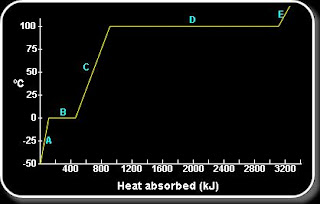Introduction :
Since heat is a form of energy,should not the units of heat be the same of energy?The international unit of heat is called joule.Another unit called calorie is also used as the unit of heat.How much heat is a calorie? The amount of heat required to raise the temperature of one gram of water by one degree Celsius is called calorie.
Meaning of calorie:
It is the amount of heat needed to increase the temperature of 1KG of water by 10c.
Heat:
Heat is a form of energy. It gives the feeling of hotness and
establishes its existence .The Sun is the natural source of heat and
light. Heat light is required for the process of Photosynthesis. We need
heat energy for our daily activities. Heat energy is necessary to heat
water, to cook, to manufacture glass, cement, and iron in factories. The
food we take provides heat energy to us.
Sun is the natural source of heat.
Abundant heat and light we get from the sun.Solar energy is necessary for all the activities on the earth.Can you tell how rain is formed?Due to heat.

Sun is the natural source of heat.
Abundant heat and light we get from the sun.Solar energy is necessary for all the activities on the earth.Can you tell how rain is formed?Due to heat.

Heat is a Form of Energy and its Units
How can we say that is form energy?Is there any basis for it ?Energy is the ability to do work.Energy can be converted from one from to another.If heat is a from of energy.,it should be able to to do work.It should also be possible to convert heat into other forms of energy.Since heat is a form of energy,should not the units of heat be the same of energy?The international unit of heat is called joule.Another unit called calorie is also used as the unit of heat.How much heat is a calorie? The amount of heat required to raise the temperature of one gram of water by one degree Celsius is called calorie.
History of Joule
The international unit of heat(any other form of energy) is called joule in honor of the British scientist James pres cot Joule.joule was accepted as the international unit of heat in 1948.Meaning of calorie:
It is the amount of heat needed to increase the temperature of 1KG of water by 10c.






